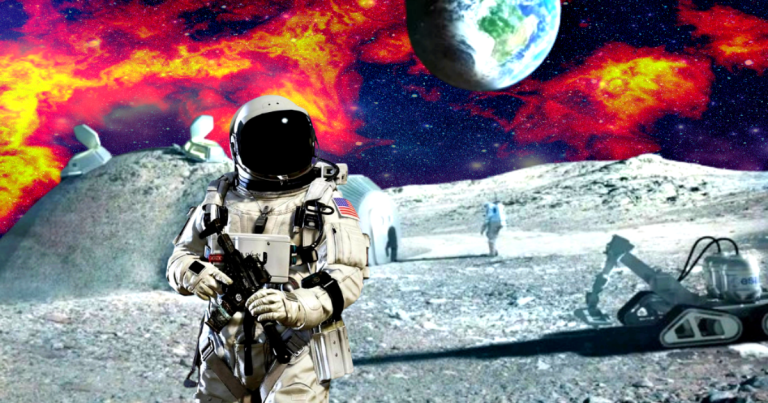
Humans haven't returned to the moon yet, but it's already generating controversy.
It is a given that no matter how deep humans travel into space, they will bring with them the cultural problems we face on Earth.
In general, plans for lunar exploration involve tapping into the satellite's minerals and perhaps even water to help make permanent human-built bases habitable.
These bases, in turn, will serve as a starting point for further space exploration to Mars and beyond.
Read: Sun and Moon: While the Pragyan probe studies temperatures on the moon’s surface, the Indian space program is preparing to launch a probe in September to study the solar wind
The question of human presence on the Moon divides communities between supporters of economic exploration of the Moon and those who express environmental conservation as a means to “protect scientific development.”
Plus, of course, there's the hard fact that the different nations exploring the Moon are not necessarily friendly to each other — and to expect these nations to behave in a brotherly manner in space when they fail to do so on Earth requires a great deal of consideration. Hope.
Read: Moon vibrations: Indian space mission finds oxygen, sulfur and other chemical elements on the surface of the moon, while seismic study of Antarctica reveals “unexplained vibrations”
The British newspaper The Guardian has an interesting article highlighting how to do this “Science and business are heading towards an astronomical conflict.”just as an early pioneering probe — the first Peregrine mission — was launched this week in an attempt to survey the lunar landscape.
At present, the discussion is centered around NASA's $2.6 billion Commercial Lunar Payload Services (CLPS) initiative.
The plan is to survey the moon for minerals, water and other resources that can be extracted to build permanent, habitable bases there.
But astronomers have taken on a conservation role, warning that unbridled exploitation of the moon could cause irreparable damage to “precious scientific sites”.

“The issue has become urgent,” says Martin Elves, from the centre For astrophysics, Harvard and the Smithsonian told the Observer. “We need to act now because decisions made today will set the tone for our future behavior on the Moon.”
This point was supported by astronomer Professor Richard Green from the University of Arizona. “We are not trying to prevent the construction of lunar bases. However, there are only a few promising sites there, and some of them are incredibly valuable scientifically. We must be very careful where we build our mines and bases.”
The United Nations Office for Outer Space Affairs is expected to implement the 1967 Outer Space Treaty.
It prevents countries from making territorial claims over celestial bodies, but says nothing about space mining and resource exploitation.
The treaty also says so 'The moon and other celestial bodies must be used exclusively for peaceful purposes.
Read: Japan's 'skinny' lunar lander successfully enters 'lunar transfer' orbit, will make first approach to the Moon today – long mission expected to land weeks from now
Green highlighted an illustration of the problem facing scientists: “A few deep lunar craters have been discovered that have been covered in shadow since the Moon formed billions of years ago. Sunlight never reaches their floors, so they are incredibly cold – perhaps only a few dozen degrees above absolute zero. This makes it of great scientific value.
Such craters would be ideal for housing precise scientific instruments – for example infrared telescopes that need constant cooling – and there are plans to build such an observatory, which would be powerful enough to observe faint, distant stars that might exist. Small rocky planets orbit around them. “These are ideal places to look for life but are outside the boundaries of existing observatories,” Green said.
Read: Highly maneuverable Chinese spaceplane lands after 276 days in orbit – Spacecraft docked several times with another object – Could be used as a weapon to target US satellites
These lightless craters may contain water in the form of ultra-cold ice, and the ice may reveal valuable information about the history of water's arrival on the Moon and on Earth.
“However, ice-filled craters will also be invaluable in the eyes of lunar colonists and will become irresistible targets for companies and astronauts establishing colonies. Water will be extremely important for humans on the moon, but we have to make sure it is taken from places where “It can be replaced scientifically.”
This internal division of the United States may be replicated in many Western countries, but when you add Russia, China, India and perhaps Japan to the mix, we realize how complicated the whole thing will become.
Read more:
Space plane race: Space Force secretly launches X-37B aboard Spacex's Falcon Heavy rocket – mission takes place as China's 'divine dragon' also orbits Earth

